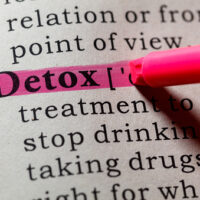Current Government Approach to Mental Health and Addiction Treatment in Saskatchewan
Every month we look at another province, and what their provincial government’s approach to mental health and addictions is. This month we are looking at Saskatchewan, but it is posing as a unique challenge. Saskatchewan released a 10-year mental health and addictions plan for the province in 2014. However, it is now in the process of dissolving its 12 health authorities into one singular health authority for the province. Will this have an impact on the province’s ability to deliver on its action plan points? Read on for an in-depth look at the 10-year action plan and how the government hopes to improve mental health and addiction treatment in Saskatchewan. Working Together for Change: A 10 Year Mental Health and Addictions Action Plan for Saskatchewan Working Together for Change was commissioned by the provincial government in 2013 to create a 10-year mental health and addictions plan for Saskatchewan. The report was delivered to the health minister in December 2014 and had seven main recommendations to improve mental health and addiction treatment in Saskatchewan. Enhance access and capacity and support recovery in the community.Services need to be made easier to find and a comprehensive list needs to be kept up to date. The report suggests promoting the use of HealthLine so those who need its services can find it. A big part of this recommendation is increasing access for people living in rural areas. In order to provide timely treatment, the recommendation suggests online clinical treatments, as well as mobile services. Focus on prevention and early interventionThe report stresses the importance of community-based organizations for prevention like youth drop-in centres and preschool programs. As well as pushing for more programs to address alcohol misuse, suicide prevention, and general mental health awareness. Create person and family centred and coordinated servicesSimilar to the existing Patient First method, the report emphasizes the need to centre the person with the lived experience. To get people help when they need it, no matter where they asked, training for all frontline providers will allow people to access treatment quicker. This should also aid in those with more than one need get help across service sectors. Respond to diversitiesIncreasing cultural awareness training so those in vulnerable populations like newcomers to Canada or LGBT people are able to gain access in a respectful environment. Partner with first nations and Metis peoplePartnering with First Nations and Metis people is the best way to coordinate and deliver mental health and addictions services. Steps must also be taken to ensure a constant dialogue and incorporation of traditional and holistic care models. Reduce stigma and increase awarenessSimilar to the previous two recommendations, sensitivity training and developing an awareness program are the suggested next steps. Transform the system and sustain the changeCollaboration between departments with shared future goals and commitment is a must for any sustained change. The report also recommends public and private sectors work together to create both employment and housing options. Moving Forward The report was released at the end of 2014. Then Minister of Health, Dustin Duncan, endorsed the report and reinforced the government’s commitment to improving services. Between 2007 and 2014 funding for mental health services had increased over 30%. Hopefully, the recent changeover in health authorities does not bury these recommendations for increased mental health and addiction treatment in Saskatchewan. As the year goes on, keep an eye on our blog as we will report more on Saskatchewan’s unveiling of the new health authority. If you or a loved one needs help looking for mental health and addictions treatment in Saskatchewan, please contact our specialist. References: Government...
Outpatient, Inpatient, Rehab, and Detox: What Do They Actually Mean?
The terminology used in rehab treatment brochures and online can be confusing if you are not familiar with the industry. We have compiled a few commonly used terms here in an effort to make accessing treatment and other resources easier. Outpatient and Inpatient Outpatient and inpatient treatment programs are similar in that they both use group therapy. Some of these support groups are evidence-based and others are faith-based like 12-step programs. While programs vary, many utilize other treatments like individual counselling, education, family support, and medical care. Almost all those struggling with substance use will begin their journey at an outpatient office. Here a staff member will assess the person to see if inpatient care is necessary. Outpatient – A person with substance use issues lives at home and accesses care at an outpatient office in their community. These offices might be a mental health clinic, hospital clinic, health unit, or a private counsellor. Outpatient programs are great for those early in their substance use struggles, those who can’t afford inpatient programs, or those who want to stay in their community and not leave their job or family. Inpatient – The client lives at an inpatient treatment facility. Sometimes this facility is part of a hospital or special clinic, but is often a specialized drug and alcohol rehabilitation centre. At this type of facility, individuals stay in a facility for a certain period of time and participate in treatment and activities during the days and evenings. Stays at an inpatient facility can range from one week to more than a month. Detox and Rehab Detox – Detox, short for detoxification, is not necessary for everyone with substance use issues. It is not simply ceasing using substances. The Centre for Substance Abuse Treatment definition is as follows, “detoxification is a set of interventions aimed at managing acute intoxication and withdrawal. It denotes a clearing of toxins from the body of the patient who is acutely intoxicated and/or dependent on substances of abuse. Detoxification seeks to minimize the physical harm caused by the abuse of substances.” Some levels of addiction mean a client cannot safely detox alone or without access to medical care. There are different kinds of detox clinics, some that provide medical care and others that do not. Please consult a healthcare professional before attempting to detox alone. Rehab – Rehab has become a colloquial term so much now that it has almost lost its true meaning. Rehab is short for rehabilitation, which refers to an inpatient residential drug and alcohol rehabilitation facility. Many people think their loved one who struggles with drugs or alcohol must go to rehab, but that is often not the case. Many can succeed through outpatient programs. If you or a loved one requires more help navigating inpatient, outpatient, detox, or rehab options, please contact our specialist here. References: Inpatient and Outpatient Treatment for a Substance Use Problem Detoxification and Substance Abuse Treatment The post Outpatient, Inpatient, Rehab, and Detox: What Do They Actually Mean? appeared first on Canada Drug...
How to Have a Fun, Dry St. Patrick’s Day
St Patrick’s Day is considered a drinking holiday in today’s society, which can be hard to participate in when you do not drink. There are many responses these days to this idea of St Patrick’s Day being intrinsically tied to alcohol. Patriotic Irish groups and sober groups have made their own celebrations for anyone wanting to celebrate a dry day. The #1 rule for success is preparation! Plan ahead what you are doing for the day and who you will be with. Making sure you already have sober plans makes it much easier to decline drinking invitations and remain accountable. For the Irish Sober St. Patrick’s Day is an organization started in New York by William Reilly who proposed the idea to community leaders in addiction recovery and Irish Americans. Since 2012, it has been an annual event held on the same day as the St. Patrick’s Day Parade in New York City. There are now events in both the USA and Ireland. The mission statement of the organization is “to reclaim the true spirit of the day and to change the perception and experience of what St Patrick’s Day can be by providing family-friendly, alcohol-free events that celebrate the depth of Irish culture, as well as year-round educational and cultural activities.” For the Reveler College campuses in North America have become notorious for binge drinking and hard partying. St Patrick’s Day is no exception. Universities and colleges always have a variety of clubs and societies and now that there are sober and recovery societies, dry St. Patrick’s Day events are popping up. Keep an eye out in the weeks leading up to the day as many recovery groups will also host get-togethers. Being around those also focused on their personal recovery creates a safe atmosphere where you can begin to make new St. Patty’s memories. For the Self Starter Thanks to the Internet, fun shirts like “Kiss Me, I’m Irish and Sober” are available, making avoiding beers easier. Hosting a dry party at home will create a safe and fun atmosphere for yourself and others. If you don’t want to host, make sure you have some kind of plan. Declining drinking event invitations takes practice, but is vital for recovery longevity. Your friends should be understanding of your desire to avoid unnecessarily triggering situations. References: Sober St Patrick’s Day How to have a sober St Patrick’s Day 6 tips to help ensure a sober St Patrick’s Day The post How to Have a Fun, Dry St. Patrick’s Day appeared first on Canada Drug...
Help Finding Public Drug and Alcohol Treatment in Saskatchewan
This month, learn how to access public drug and alcohol treatment in Saskatchewan in the next installment of Provincial Snapshot. Each month, we are outlining the steps you must take to access public drug and alcohol treatment in each province. This blog will detail how to access different levels of addiction and mental health care. If you or someone you know requires urgent help, please call 911. Early Access to Treatment The four main types of publicly available treatment in Saskatchewan are outpatient, detox, inpatient, and long-term residential services. Outpatient treatment is your first port of call and clinics are found all over the province. At an outpatient clinic or agency, staff will help you with assessment, one on one and group counseling, and general education. A detox facility is a safe environment for those with more advanced substance use issues to undergo withdrawal from substances. A detox usually lasts 7-10 days and clients will be given resources to aid in furthering their road to recovery. Detox facilities are located in La Ronge, Lloydminster, Meadow Lake, Moose Jaw, Prince Albert, Regina, and Saskatoon. If you are too far away from one of these cities, you must get a medical referral. This allows you to go to your closest hospital or health unit for medically assisted detox/supervised withdrawal. The health unit should also be able to liaise with outpatient and residential programs. They often have social workers on staff who will help get you set up with assistance and/or referrals. Continuing Care for Severe Substance Use Continuing treatment can mean being admitted into an inpatient facility. Similar to outpatient where the client receives counseling and other activities, it is more intensive and the clients live at the facility. These programs last around four weeks and are available in Ile-a-la-Crosse, Indian Head, La Ronge, Lloydminster, Prince Albert, Saskatoon, and Regina. Long-term residential services offer longer stays than inpatient and also include life skills training. This provides a better base for success for clients once they have left treatment. Remote Care If you live rurally and do not believe you will be able to access in-person treatment, consider using HealthLine 811. This 24/7 service is free, confidential, and available to anyone in Saskatchewan. Dial 811 on your phone and you will be connected with “registered psychiatric nurses, registered nurses and social workers who can offer crisis support and strategies to someone in a mental health crisis.” HealthLine 811 services are also available online here. Another online way to find your closest outpatient, inpatient, detox, or other addiction service is by visiting the Saskatchewan government’s map of health care facilities. There are search filters you can use to find the most accurate result. If you or a loved one need more help accessing public drug and alcohol treatment in Saskatchewan, please contact our specialist here. References: Alcohol and Drug Services HealthLine Mental Health and Addictions Action Plan Newsletter Health Care Facilities The post Help Finding Public Drug and Alcohol Treatment in Saskatchewan appeared first on Canada Drug...
Drug Fact Sheet: Marijuana
Today’s blog on marijuana looks at its origin story and its mental and physical effects. Marijuana is the dried leaves and flowers of the Cannabis sativa or Cannabis indica plant. The cannabis plant contains Tetrahydrocannabinol (THC) which is what gives people the high. There are many ways to consume marijuana including smoking using various paraphernalia, vaporizing, and eating it mixed into food like cookies. History Marijuana dates back at least 4000 years with references to it in ancient Chinese medical texts. It is believed to have spread from there to India, the Middle East, and then Europe about 1500 years ago. The Chinese used it to treat rheumatism, gout, and malaria. It seems it was mainly used recreationally in India and the Middle East. Hashish was developed in the Middle East and spread to North Africa. In the 1500s and 1600s Europeans brought the crop over to the Americas and hemp was relied upon until cotton overtook it in popularity in the early 1900s. In the 1900s, marijuana was still being used medicinally for ailments like rheumatism, pain, and nausea. However, in the 1930s, the US government began an image war against marijuana claiming it was “a powerful, addictive substance that would lead users into narcotics addiction”. In the decades following, it became intrinsically associated with college kids and hippies who flaunted its use against authority and politics of the time. The decades-long war on drugs is now largely regarded as a failure, and the US and Canada are now looking at decriminalization of marijuana. Effects Smoking marijuana delivers the drug quickly and effects come on within minutes. Eating takes longer for the drug to absorb, taking effect 30 to 60 minutes after consumption. THC can alter the user’s sense of time, body awareness, mood, and memory. Researchers believe they have found that teenagers who use marijuana heavily lose some brain function into adulthood. However, they have not noticed the same loss in adults who started using marijuana as adults. Some people who heavily use marijuana report having mild withdrawal symptoms like irritability, anxiety, and lack of sleep and appetite. There are no pharmacological responses for these symptoms, but various therapies have shown to be very effective. If you or a loved one is experiencing symptoms of overuse or withdrawal symptoms, please contact our specialist for help. References: Marijuana History Drug Facts: Marijuana Liberal Caucus Supports Decriminalization The post Drug Fact Sheet: Marijuana appeared first on Canada Drug...








